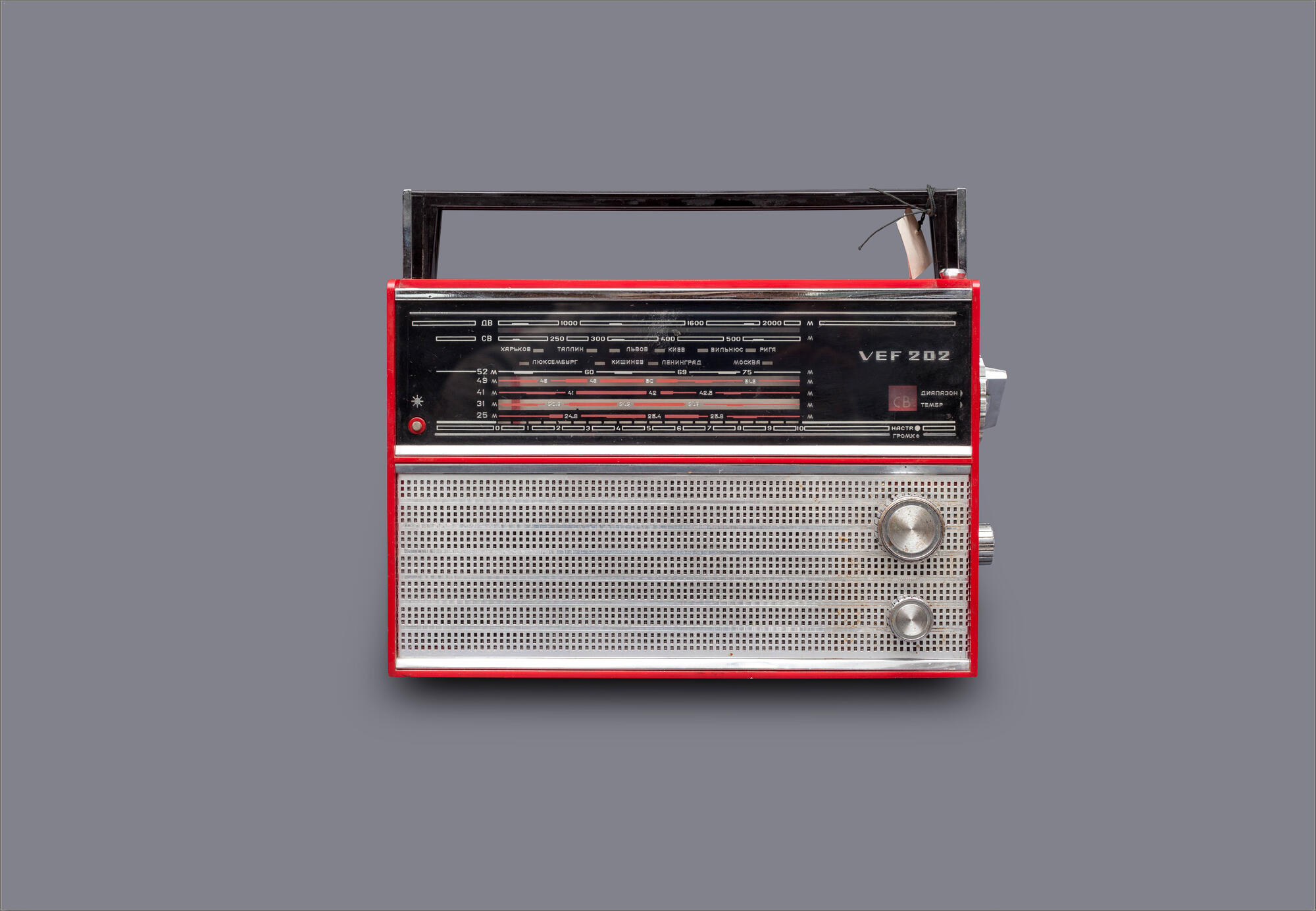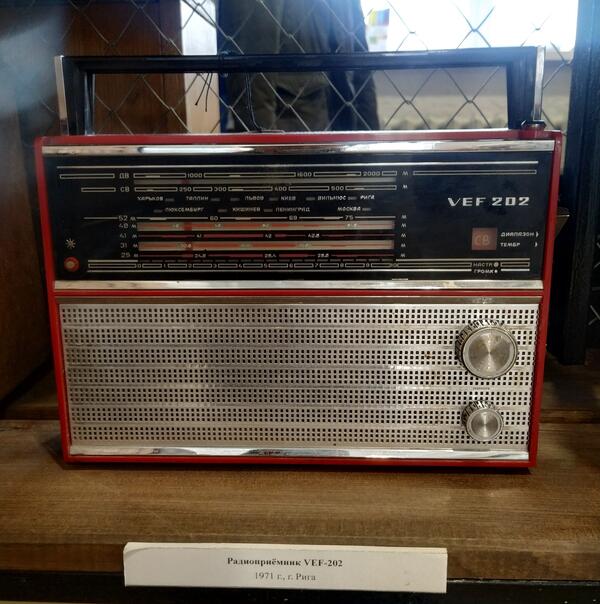The VEF-202 receiver can now be safely called a Soviet vintage radio, with some even considering it a legend. Mass production of this portable radio began at the Riga factory (Valsts Elektrotehniskā Fabrika) in 1971.
The VEF-202 was designed by the Riga Electrical Engineering Factory on the basis of the VEF-201 model. The new model differed by its exterior design and minor modifications in electric circuits. The case was made of leather-imitating plastic. The radio was relatively expensive, big and heavy, but nevertheless very popular with Soviet consumers because of its great characteristics and impressive build-up quality.
The VEF-202 could receive radio stations in seven frequency bands: LW, MW, SW I, SW II, SW III, SW IV, SW V. The receiver was truly multifunctional. Its net weight was 2.7 kilograms, and 600 grams more with a set of batteries.
Inside every VEF-202 radio, one could find a folded piece of paper put under the board. The text printed said: “We, the employees of the Order of Lenin VEF Factory, have undertaken to produce only articles of excellent quality. Should you find any defects, please report them. Adjuster: [full name], QCD Inspector: [full name]”.
The rear of the receiver featured a “Quality Mark”. The 202nd model had a number of jacks: a jack for an external antenna for MW, LW, and SW, a jack for headphones (mono) below, as well as a jack for a 9V external power supply plug. To the right of the jacks, under a large cover with two screws was a battery compartment. Six D-type Saturn or Mars batteries were used.
The export version of the radio was sold as the VEF-206 and sometimes also had its name supplemented with the words “VEGA” or “Reneva electronic”. Its manufacture began in 1973, two years after the 202nd model came to the domestic market in the USSR.
By the time of the breakdown of the Soviet Union, the VEF had been employing a workforce of about 20 thousand. In 1999, the factory’s activities were in fact discontinued, the enterprise split into a number of smaller firms, and the factory blocks were either re-formatted for a different purpose or abandoned, altogether.
The VEF-202 was designed by the Riga Electrical Engineering Factory on the basis of the VEF-201 model. The new model differed by its exterior design and minor modifications in electric circuits. The case was made of leather-imitating plastic. The radio was relatively expensive, big and heavy, but nevertheless very popular with Soviet consumers because of its great characteristics and impressive build-up quality.
The VEF-202 could receive radio stations in seven frequency bands: LW, MW, SW I, SW II, SW III, SW IV, SW V. The receiver was truly multifunctional. Its net weight was 2.7 kilograms, and 600 grams more with a set of batteries.
Inside every VEF-202 radio, one could find a folded piece of paper put under the board. The text printed said: “We, the employees of the Order of Lenin VEF Factory, have undertaken to produce only articles of excellent quality. Should you find any defects, please report them. Adjuster: [full name], QCD Inspector: [full name]”.
The rear of the receiver featured a “Quality Mark”. The 202nd model had a number of jacks: a jack for an external antenna for MW, LW, and SW, a jack for headphones (mono) below, as well as a jack for a 9V external power supply plug. To the right of the jacks, under a large cover with two screws was a battery compartment. Six D-type Saturn or Mars batteries were used.
The export version of the radio was sold as the VEF-206 and sometimes also had its name supplemented with the words “VEGA” or “Reneva electronic”. Its manufacture began in 1973, two years after the 202nd model came to the domestic market in the USSR.
By the time of the breakdown of the Soviet Union, the VEF had been employing a workforce of about 20 thousand. In 1999, the factory’s activities were in fact discontinued, the enterprise split into a number of smaller firms, and the factory blocks were either re-formatted for a different purpose or abandoned, altogether.



